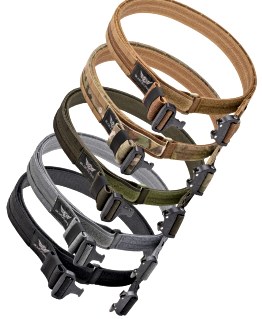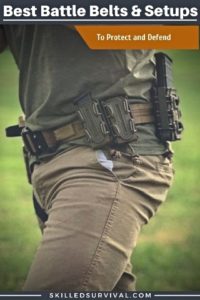
Most people pick a belt based on how well it matches their outfit. I call these folks “The Fragile Masses!”
But here’s the deal—your belt should be doing a whole lot more than just holding your pants up.
For combat professionals, soldiers, and law enforcement officers, the right belt isn’t just a fashion statement—it’s a lifesaver.
When your life depends on it, your belt should be ready to carry gear, hold weapons, and withstand any challenge thrown at it. So, forget fashion—it’s time to think function.
Best Battle Belts On The Market Today
Looking online, you’ll find a wide array of tactical belt designs. And each has both its proponents and critics.
So, look for those with high quality materials, design, and features:
For the past decade, HSGI belts have been a mainstay in the duty belt space.
The Sure-Grip padded belt is an excellent solution for those looking for an extensive belt. And it comes with a ton of attachment space.
The sleeve design accommodates up to a 2" tactical or riggers belt. But the internal HDPE stiffener sheet makes the actual belt surface even wider.
It easily mounts large magazine pouches or medium radio packs without much difficulty.
The neoprene lining is grippy and does NOT slide around on your clothing, always keeping it in its proper place.
PROS
- Well-padded and comfortable
- HDPE stiffener sheet provides protection
- MOLLE/PALS compatible
CONS
- Sold as "sleeve only" and requires an additional belt
↓ HSGI Laser Sur Grip Padded Belt
There are plenty of high-end belts with prices well above $100. But there are also decent tactical belt solutions in a more budget-friendly range.
The Condor Gen II is a sleeve-style belt. But it requires you to provide your own tactical or riggers belt for closure.
The 100% nylon build is durable enough for occasional use. But you may find that prolonged use in rugged terrain and with a lot of gear will wear quickly.
The wide belt channel and lack of internal stiffeners allow it to roll over under heavier loads.
It's MOLLE and PALS compatible but unfortunately doesn't allow you to attach directly to the inside belt. So, gear such as holsters won't connect as rock-solid as other belts on this list.
PROS
- Affordable
- The sleeve design allows you to choose the tactical belt that suits you best
CONS
- Not as durable as other options
- Mounting points are not as secure
- Belt rolls under heavy load
↓ Condor Gen 2 Belt
The Petac Gear Tactical Rigger's belt hits all the keywords in its name. But it's best as a very light-duty gun belt.
It comes with an inner and outer belt system and a load-rated COBRA buckle with D-ring. It also has MOLLE-compatible webbing.
It's very rigid and doesn't roll over or sag under a load of ammo.
Unfortunately, the MOLLE webbing appears to be of a fixed length. So larger sizes will not have extra MOLLE capacity on the additional length of the belt.
Overall, it's a solid belt, but a redesign could improve on some minor issues.
PROS
- Moderate price
- Good MOLLE attachments
- COBRA buckle and D-ring
CONS
- MOLLE attachments don't run full length on larger sizes
- Innerbelt too large for non-military pant loops
↓ PETAC Gear Tactical Belt Review
The Blue Alpha MOLLE 1.75" Double Belt is an extremely high-quality inner/outer belt system. It has a comfortable Velcro-lined inner belt to hold up your pants. And a MOLLE compatible outer belt for mounting gear.
Like the Ronin Shuto, the Blue Alpha is best for lightweight belt builds. At 1.5" for the inner belt, it's much more suitable for non-military issue pants with smaller belt loops.
The COBRA buckle, with an optional D-ring attachment point, has a full bodyweight rating. But please note, Blue Alpha doesn't rate it for rappelling for liability reasons.
This Blue Alpha belt is top-notch, and the company stands behind it for all warranty questions.
PROS
- Incredible build quality
- Very sturdy COBRA buckle with D-ring
- Extremely stable mounting points
CONS
- Expensive
- Too narrow for larger accessory pouches
↓ Blue Alpha Gear Double Belt Rig
This Ronin Shuto belt is an incredibly well-built Inner/Outer style belt system.
It comes with a 2" inner tactical belt attached to a 1.75" exterior belt. It also has MOLLE-compatible webbing.
The materials throughout are of high quality and it includes a metal COBRA buckle with ANSI certification.
It's not as wide as some other belts on the market. So, it's a good choice for anyone looking to build a very lightweight and fast system without a lot of large pouches.
Note, it’s on the pricier end of the spectrum, but the lifetime warranty and build quality are second to none.
PROS
- Lifetime warranty
- COBRA buckle
- Made in the USA
CONS
- Expensive
- Not wide enough for large accessory pouches
↓ Ronin Tactics Shuto Range Belt
This belt from KORE may fall more in the "tactical belt" category but it's so good, I had to add it to this list.
The X7 Buckle is made from aerospace-grade aluminum, which means it's tough as nails and won't break under pressure.
Plus, it's low profile and won't snag on anything, making it perfect for quick draws and other tactical maneuvers.
It's made from a sturdy nylon webbing that can support even the heaviest of firearms without sagging or bending.
And the best part? The belt is adjustable in 1/4" increments, so you can get the perfect fit for your waistline.
But what really sets the KORE Tactical Gun Belt apart is its unique Trakline system.
This allows you to adjust the belt quickly and easily without having to deal with pesky holes or buckles.
Simply slide the buckle along the track and you're good to go - it's that simple!
↓ KORE Tactical Belt Review
Battle Belts Vs. Tactical Belts
Many use these terms interchangeably. But there are differences between them:
Tactical Belt
A tactical belt (or survival belt) typically serves as a discrete EDC (everyday carry) item.
That’s why they’re usually made to fit in the loops of your pants. But this design limits them to 2″ widths – sometimes even narrower. So large gear and pouches won’t fit.
That’s why most tactical belts won’t allow for permanent attachments:
- Pouches
- Sheaths
- Or holsters
You put those on as you thread the belt into your pants. But that takes time and leaves you adding and removing equipment daily.
This act quickly becomes cumbersome. And can be an organizational nightmare.
Plus, the gear won’t be as secure as it should be.
Battle Belt
Instead, you can wear one independently (or in tandem with) a tactical belt.
It has NO width limits because they’re not designed to fit through belt loops. So, they’re free to provide a wider surface for more attachment points. And thus, support heavier gear. And they tend to feature rugged materials and stiffer construction vs. tactical belts.
This upgrade reduces the amount of sagging under load. And it makes them more comfortable than a similarly loaded tactical belt.
Some feature extra padding as well. This further increases comfort by preventing your gear from digging into your hips.
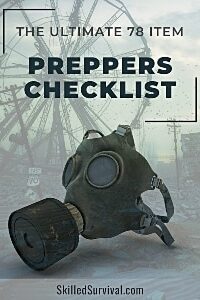
Want a free 78 item preppers checklist?
Enter your email below to instantly download this Complete Checklist PDF. No purchase necessary. 👇 👇“Philosophy” Behind Combat Belts
Before we get into specific features and setups, you must understand the “justification” behind wearing one. A belt should not only keep your pants up, but it should carry your self-defense and survival gear.
Which is way more important than preventing an embarrassing “wardrobe malfunction.”
YOU get to choose WHAT to carry. And this choice will be personal. But there are two guidelines to remember:
- Belt gear is for making and plugging holes
- The lighter, the better
Making Holes / Plugging Holes
First, a combat belt is ideal for combat survival.
Times when your life depends on the outcome of a fight.
In such a situation, your choice of belt may determine who walks away. And success comes down to having extra magazines of ammo or a fighting knife at hand (“making holes”).
OR, if you or a teammate gets injured, you’ll be glad you attached a compact Individual First Aid Kit (IFAK).
An IFAK to control significant bleeding (“plugging holes”).
Lighter IS Better
Secondly, it allows you to carry only limited supplies.
Resist the urge to attach EVERYTHING!
Some combat belts feature suspender attachments.
These battle belt setups are compatible with drop-leg pouches and holsters. But if you’re adding so much gear you require suspenders, double-check how much you’re carrying. It’s probably too much!
Remember, your belt isn’t your only way to carry. Instead, dump some extra gear into your other body armor, such as;
- Tactical pack
- Chest rig
- Plate carrier
- Tactical pants
Pockets are a better location for small items, like a folding knife, notepad, or cell phone. Of course, none of these rules exist in a vacuum.
So take time to assess your belt’s overall weight and bulk.
The bottom line is: It’s often faster and safer to keep your combat belt gear to a minimum.
Adding too much for every survival possibility will slow you down.
Why You Should Own A Combat Belt
A combat belt isn’t what most of us wear to the office (unless your “office” is a combat training field). That’s because these belts are a visible piece of combat gear. They draw attention.
These military-style belts are NOT compatible with a gray man strategy. But it’s one of the best ways to secure and organize all your combat essentials.
It’s a great way to keep them in one place, ready to deploy.
You can throw one on as you run out the door, knowing all the items you need in a fight are in place.
Also, unlike a chest rig or survival backpack, a gear loaded belt won’t hinder your ability to cool off under heavy exertion. And it keep your center of gravity lower for better balance.
So, if combat is inevitable and you’re not worried about staying unassuming, nothing beats a combat belt.

Want a free 78 item preppers checklist?
Enter your email below to instantly download this Complete Checklist PDF. No purchase necessary. 👇 👇Best Battle Belt Features To Look For
As with any tactical gear, plenty of choices exist.
Choosing the right one will impact your comfort. And your ability to carry your load and your efficiency in a fight.
Independent vs. Inner/Outer Belt Systems
There are two types you should consider:
1. Independent Belt System
The first is a stand-alone belt. These battle belt setups you wear over clothing. They don’t rely on belt loops and are independent of your tactical pants.
These systems allow you to wear them outside in extra layers. And do so without any adjustments other than the length.
The second option is an Inner/Outer belt system.
2. Inner/Outer Belt System
This setup pairs a wider belt with a standard tactical belt. This configuration allows you to thread your belt through standard pant loops.
These attach with a long strip of heavy-duty Velcro along the entire matching surface.
This design keeps your belt secure without fear of rotation around your body. But the outer belt is often not as stiff as a stand-alone belt and relies on the inner belt for rigidity.
So, it may not be as capable if used alone or over clothing layers.
Comfort
Comfort is paramount when carrying extra ammo and medical gear.
Because if you’re distracted by a belt holster or a sagging belt, your focus isn’t completely on the emergency. And if this happens at a critical moment, you might find yourself on a stretcher.
A comfortable belt will:
- Keep your mind in the game.
- And gear at your fingertips.
Materials
As with all survival gear, you get what you pay for… So find a belt with rugged materials and construction.
Look for quality stitching and reinforcements in high-wear areas.
If you settle for cheap nylon, it will perform cheaply.
Closures
A belt is only as good as the buckle.
I am a HUGE fan of the COBRA metal buckles. Why? Because they’re one of the only fast-release buckles with a full load rating.
These buckles have appeared in many tactical and rescue gear, including airborne med/evac litters designed for chopper rescues.
If you get one WITHOUT a COBRA buckle, make sure it’s strong and rugged. Look for a steel buckle or aluminum with “double-back” webbing.
Attachment Systems
The standard PALS, MOLLE, and other laser-cut mounting designs are common in tactical gear. And most belt systems can accommodate one or more of them.
Check you have enough space for all the attachments you plan to add. Also, ensure the belt’s width supports the gear without rubbing on your skin.
Price
I hate to admit it, but in the end, price play a role. Factor in the cost of extra attachments (holsters, sheaths, pistol mags).
When pricing your belt – these attachments add up.
If over budget, DON’T skimp on the belt itself. Why? Because you’ll change and reorganize your attachments over time. And you can always upgrade later. But changing the belt is usually the most expensive part, so get that right first.
How To Set Up Your Gunfighter Belt
When it comes to setup, it’s all about personal preference.
For example: The exact weaponry you carry and how much overall weight.
Watch this video for a tutorial on setups:
↓ How To Setup A “Gunfighter” Belt | War Belt
I’ve also found the following two references:
- The Practical Application of Tactical Gear, Load & Weight Considerations
- The Belt: 3 Essential Tips for Carrying Gear Like a Boss
These articles provide a compromise between agility and carrying for every eventuality.
These authors are both tactical instructors and former military. So, they’ve put systems through the wringer and determined what works best.
They also understand their approach might not work for everyone. In the end, here’s a short gear list to get started:
- Handgun holster
- Pistol magazines x2-4
- Rifle mags x2
- IFAK pouch
- Small dump pouch
- Tactical knife
You’ll soon find the right amount of weight and the tools that you can’t live without.
It will help if you read lots of these long-running online threads. These are resources where people discuss their own war belt setups in detail.
You’ll also discover most people have an evolving belt setup. One with different weapons, pouches, and accessories showing up and disappearing over time. And you may decide someday to branch out from what you can carry easily.
That’s when you’ll want to research a chest rig, plate carrier, or tactical backpack.
Final Thoughts
A battle belt is ideal for carrying lifesaving gear in a fight. To be agile and always ready. But avoid laboring under a heavy pack.
Yet, it can be set up and ready at a moment’s notice. It’s like a utility belt for the modern combat.
That’s why it’s an indispensable part of wartime preparedness.

Prepare, Adapt & Overcome,
P.s. - I just found out 2 out of 3 Americans don’t feel prepared for a 3 day disaster!!!
I guess this goes to show how modern society continues to embrace ‘living a fragile life.’ What’s crazy is… it’s so easy to fix.
To make sure YOU have the basics, watch our FREE training on “10 Simple Steps To Basic Preparedness” that shows you HOW.
Nothing crazy here… this isn’t doomsday prepping... just the basics every responsible adult should have before a disaster strikes.Why You Can Trust Skilled Survival...
Go here now to review a full breakdown of:
- Who We Are
- Our Credentials
- Our Mission
- & Product Recommendations...
Here are a few highlights of our teams credentials & certifications:
- Certified Member of a Mountain Search & Rescue Organization
- Plant Emergency & Safety Leader for a Major Food Manufacturer
- Member of the 10TH Mountain Division Hut Association
- Certifications: Avalanche 1, WFR, CPR
- Official Gear Tester for Numerous Outdoor Gear Companies
- Countless Multiday Backpacking trips into Remote Wilderness
- Bachelor's Degree In Mechanical Engineering
- Bachelor's Degree In Civil Engineering
- Bachelor's Degree In Biomedical Engineering
"It takes 20 years to build a reputation and five minutes to ruin it." - Warren Buffett
We're fully aware that trust is NOT something you GET but is EARNED.
And we'll continue to earn YOUR trust through our forthright and honest approach with each new Blog Post, Guide & Product we create...
P.s - I just took this FREE 60-second 'Readiness Score Quiz'👇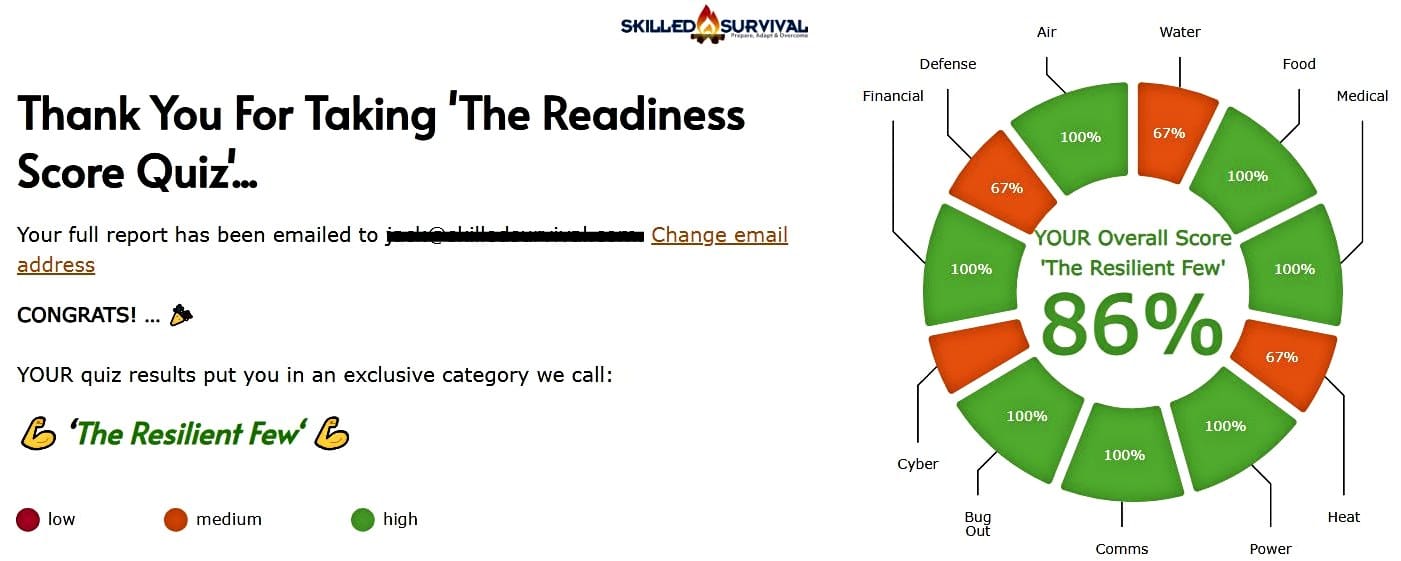
AND... I've still got a few gaps in my preps...🤔 But at least, I'm not part of 'The Fragile Masses'. 👍 Find out where YOU stand by answering a few questions...
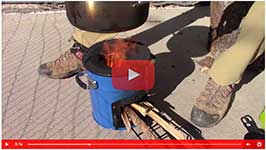
Recommended Reading
10 Best Karambit Knives For Inflicting Devastating Wounds
The best karambit knives are innovative, durable, deadly and 100% worth owning! In this guide, we review the best ones on the market to make your search easy.
Best Bulletproof Backpack: Do They Really Work Or Not?
We've spent hours researching which bulletproof backpack is best so you can rest assured in knowing you're protecting your kids at school.
Best Stun Batons: A Powerful Way To Punish An Attacker
The best stun batons are strong, effective, intimidating and 100% worth carrying! In this guide, we review the best ones on the market to make your search easy.




